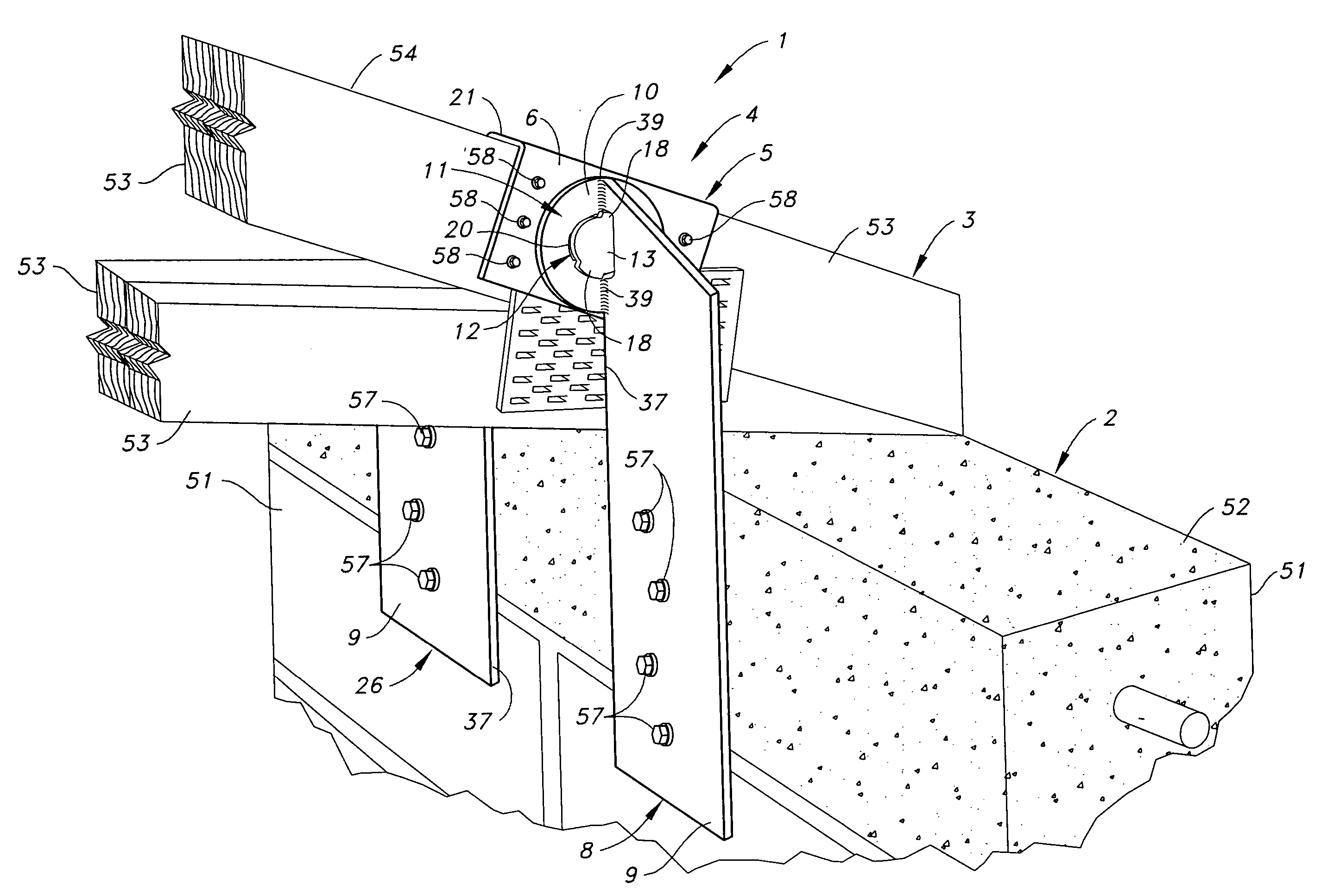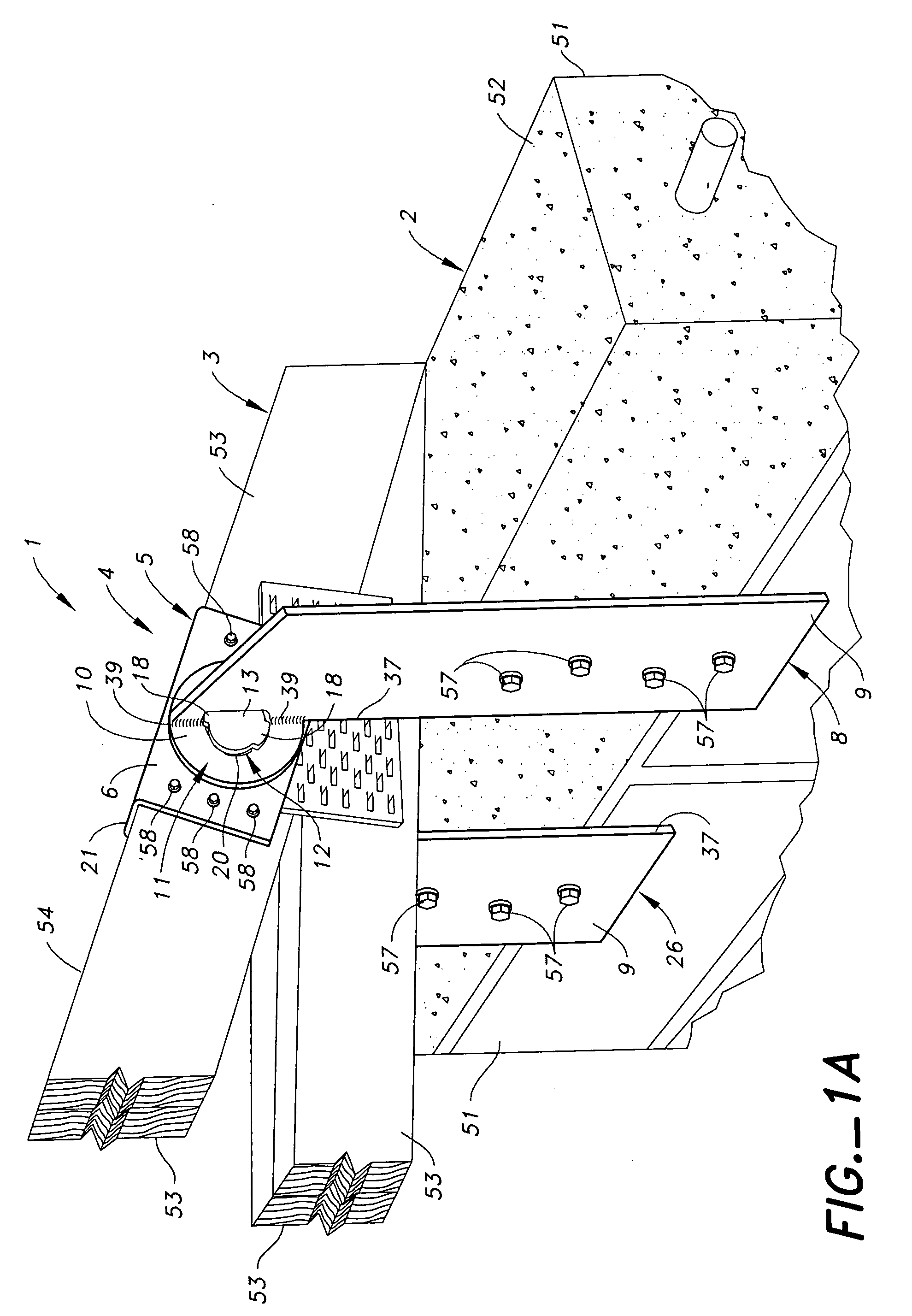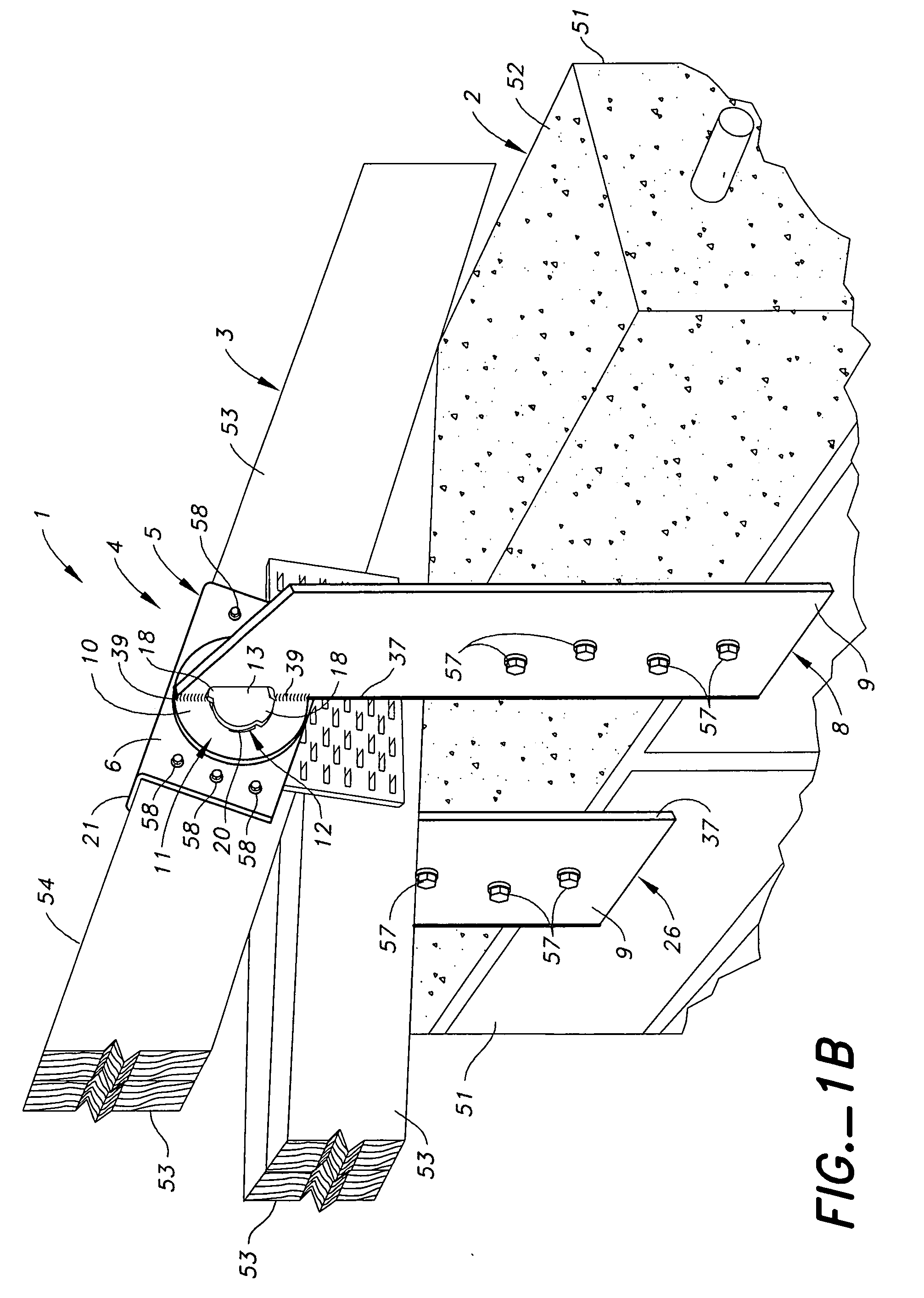Girder tiedown
a technology of girders and tie-downs, which is applied in the direction of rod connections, furniture parts, manufacturing tools, etc., can solve the problems of difficult attachment of heavy-duty connectors, insufficient resistance of conventional light-gauge connectors, and significant accumulation of forces in the girder. achieve the effect of easy and convenient assembly
- Summary
- Abstract
- Description
- Claims
- Application Information
AI Technical Summary
Benefits of technology
Problems solved by technology
Method used
Image
Examples
first preferred embodiment
[0092] In the first preferred embodiment, the first pin 13 is fixedly attached to the other of the cap 5 and the first side attachment member 8 that does not have a first pin opening 12. Preferably, as shown in FIG. 1A, the first pin 13 is fixedly attached to the cap 5 and the first pin opening 12 is in the first side attachment member 8.
[0093] Preferably, the first restraint extension 18 is one or more lobes 18 that extend beyond the circumference 15 of the body 14 and the circumference 19 of the first pin opening 12. Preferably, the first pin opening 12 has one or more open lobes 20 that extend beyond the circumference 19 of the first pin opening 12. Preferably, the fixedly attached first pin 13 is inserted through the first pin opening 12 in an orientation that permits the one or more lobes 18 on the first pin 13 to pass through the one or more open lobes 20 of the first pin opening 12, and the cap 5 and the first side attachment member 8 are then rotated on the first pin connec...
second preferred embodiment
[0102] In the second preferred embodiment, the first pin 13 is fixedly attached to the first side attachment member 8 and the first pin opening 12 is in the cap 5. This particular arrangement, according to which the first pin 13 is fixedly attached to the first side attachment member 8, is similar to fixedly attaching the first pin 13 to the cap 5 and is, therefore, not shown in the drawings. This is less preferred than attaching the first pin 13 to the cap member 5, but it would be a functional alternative. As in the first preferred embodiment, and the first restraint extension 18 is one or more lobes 18 that extend beyond the circumference 15 of the body 14 and the circumference 19 of the first pin opening 12, and the first pin opening 12 has one or more open lobes 20 that extend beyond the circumference 19 of the first pin opening 12. The fixedly attached first pin 13 is inserted through the first pin opening 12 in an orientation that permits the one or more lobes 18 on the first...
third preferred embodiment
[0105] The third preferred embodiment is essentially the same as the first preferred embodiment, except that it is double-sided. It is always preferable that the connection of the present invention be double-sided because a single-sided connection is weaker than its double-sided counterpart. It is shown FIGS. 1A-1D and 10. In it, the cap 5 additionally comprises a second substantially planar side attachment portion 22 that interfaces with the supported structural member 3. The connector 4 additionally comprises a second side attachment member 26 comprising a substantially planar attachment portion 9 that interfaces with and is fastened to the supporting structural member 2, and a connection portion 10 that is positioned alongside the first substantially planar attachment portion 6 of the cap 5, and a second pin connection 29 that enables rotation between the second side attachment member 26 and the cap 5.
[0106] The cap 5 further comprises a second substantially planar side attachme...
PUM
 Login to View More
Login to View More Abstract
Description
Claims
Application Information
 Login to View More
Login to View More - R&D
- Intellectual Property
- Life Sciences
- Materials
- Tech Scout
- Unparalleled Data Quality
- Higher Quality Content
- 60% Fewer Hallucinations
Browse by: Latest US Patents, China's latest patents, Technical Efficacy Thesaurus, Application Domain, Technology Topic, Popular Technical Reports.
© 2025 PatSnap. All rights reserved.Legal|Privacy policy|Modern Slavery Act Transparency Statement|Sitemap|About US| Contact US: help@patsnap.com



